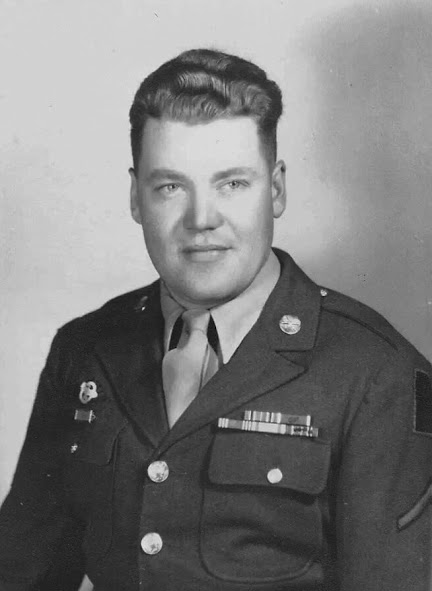A studio portrait of a Private, enlisted grade E2, of the 1st. United States Army. The 1st. Army, established on August 10, 1918, was the first of three such armies created by the American Expeditionary Force (AEF). Following World War One, it was inactivated on April 20, 1919. However, an amendment made in 1920 to the National Defense Act of 1916 would see four field armies raised, geographically located throughout the United States. The intent of this was to provide a skeletal organizational structure to accommodate mass mobilizations of forces in the time of national need. Thus, the 1st. Army was reactivated on September 11, 1933, with its geographical area being the northeastern U.S., at Fort Jay, Governor's Island, in New York. Its main mission was training support. For much of its early existence following its reactivation, the 1st. Army was more on paper than actual troops and it consisted mainly of staff personnel. This changed as the U.S. moved towards a war footing and starting in 1939, under the command of General Hugh A. Drum, the 1st. Army began to fill out with actual personnel. The 1st. Army entered combat with the invasion of Normandy (D-Day) on June 6, 1944 and would see continued action in the Northern France, Rhineland, Ardennes-Alsace, and Central Europe campaigns. It was the men of the 1st. Army who shook hands with Soviet forces at Torgau, Germany, along the Elbe River, on April 25, 1945. In May 1945, the 1st. Army's headquarters returned to New York to begin preparations for Operation Coronet. This was the second phase of Operation Downfall, the invasion of Japan. The 1st. Army was tasked to invade Honshū, the largest of the Japanese home islands, in the spring of 1946. Fortunately, the use of the atomic bombs on Hiroshima and Nagasaki saw the Japanese surrender, removing the need for Operation Downfall.
The private appears to have belonged to one of the field artillery battalions within the 1st. Army as evidenced by the branch insignia on the lapel of his jacket which consisted of two crossed cannons. That he served with the 1st. Army is denoted by the unit patch on his left shoulder. Although difficult to see, it consisted of a black letter A with an Army green border. The private is also no longer in the U.S. Army, having been discharged under honorable conditions. This can be told by the Honorable Discharge Emblem lozenge sewn onto the jacket above the right breast pocket. This emblem was nicknamed the “Ruptured Duck” as the poor design of the eagle was such that is more resembled a duck than an eagle. Because of this, we can assume this photograph was taken post-World War Two. Beneath the “Ruptured Duck” appears to be a Meritorious Unit Citation ribbon that is surrounded by a gold laurel frame. His ribbon bar, from top to bottom and left to right, seems to consist of the American Campaign ribbon, the Purple Heart ribbon with an oak leaf device (which meant he was awarded the decoration twice), the Good Conduct ribbon, an unknown ribbon (possibly a state National Guard ribbon), and the European-African-Middle Eastern Campaign Medal with four Service Stars which represented campaigns he had participated in.
Today, the 1st. Army is still very much active, being the oldest and longest established unit in the U.S. Army. Its main mission is to train Army Reserve and National Guard forces. It is divided into two commands, 1st. Army Division East and 1st. Army Division West. Under each are training brigades. 1st. Army Division East is based at Fort Knox, Kentucky and is responsible for all states east of the Mississippi River while 1st. Army Division West is based at Fort Hood, Texas and covers all states west of the Mississippi River. Notable early commanders of the 1st. Army included General John J. Pershing (1918), Lieutenant-General Hugh A. Drum (1938-1943), and Lieutenant-General Omar N. Bradley (1944). Interesting notes about the 1st. Army include their motto which is “First in Deed” and the A in the unit's patch represents the letter A in Army and also, being the first letter in the alphabet, harks to the unit being the first, as in, the 1st. Army. The patch was authorized on November 16, 1918 and approved by the War Department on May 5, 1922. Today, the A remains in black but now uses a white and red background.

No comments:
Post a Comment